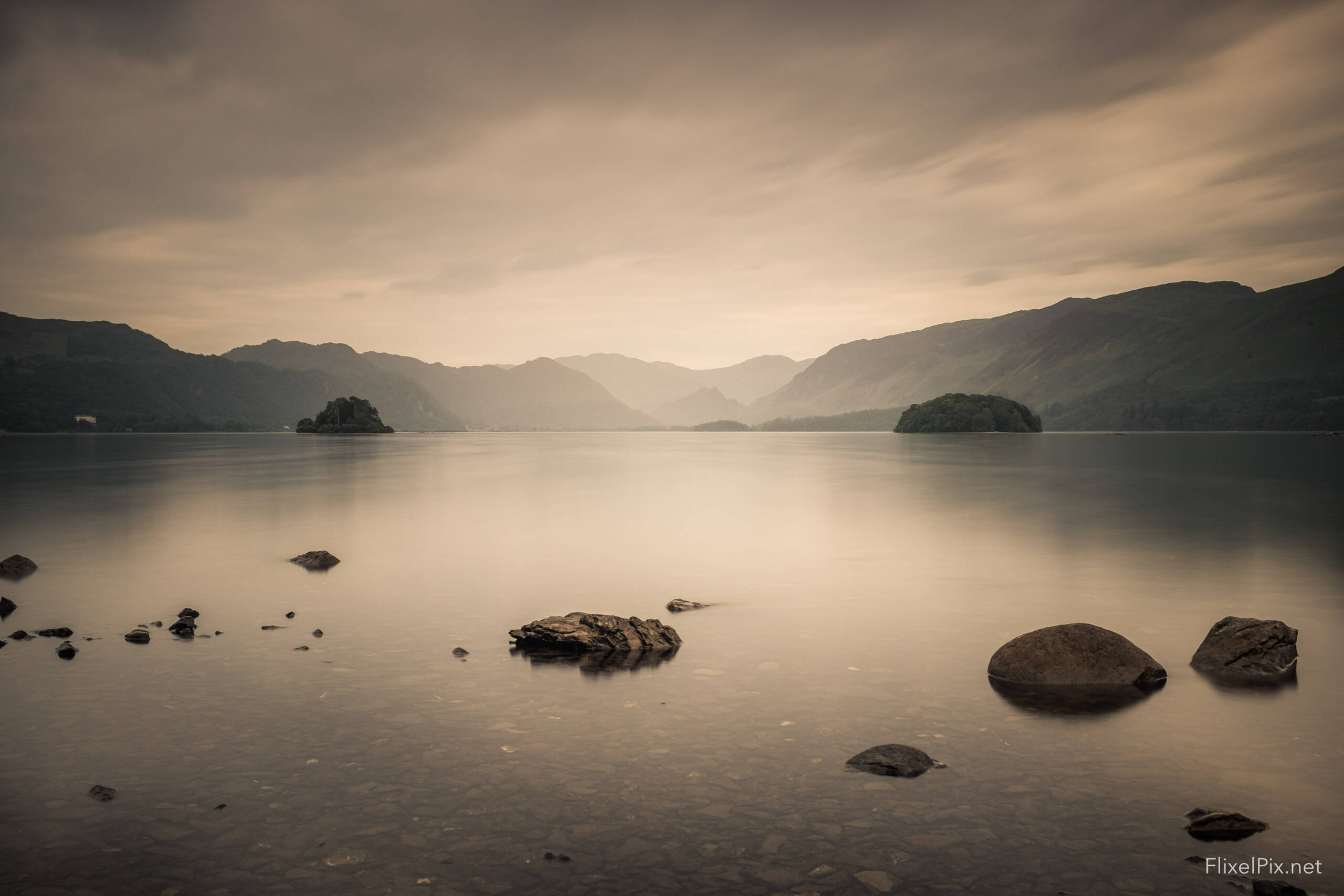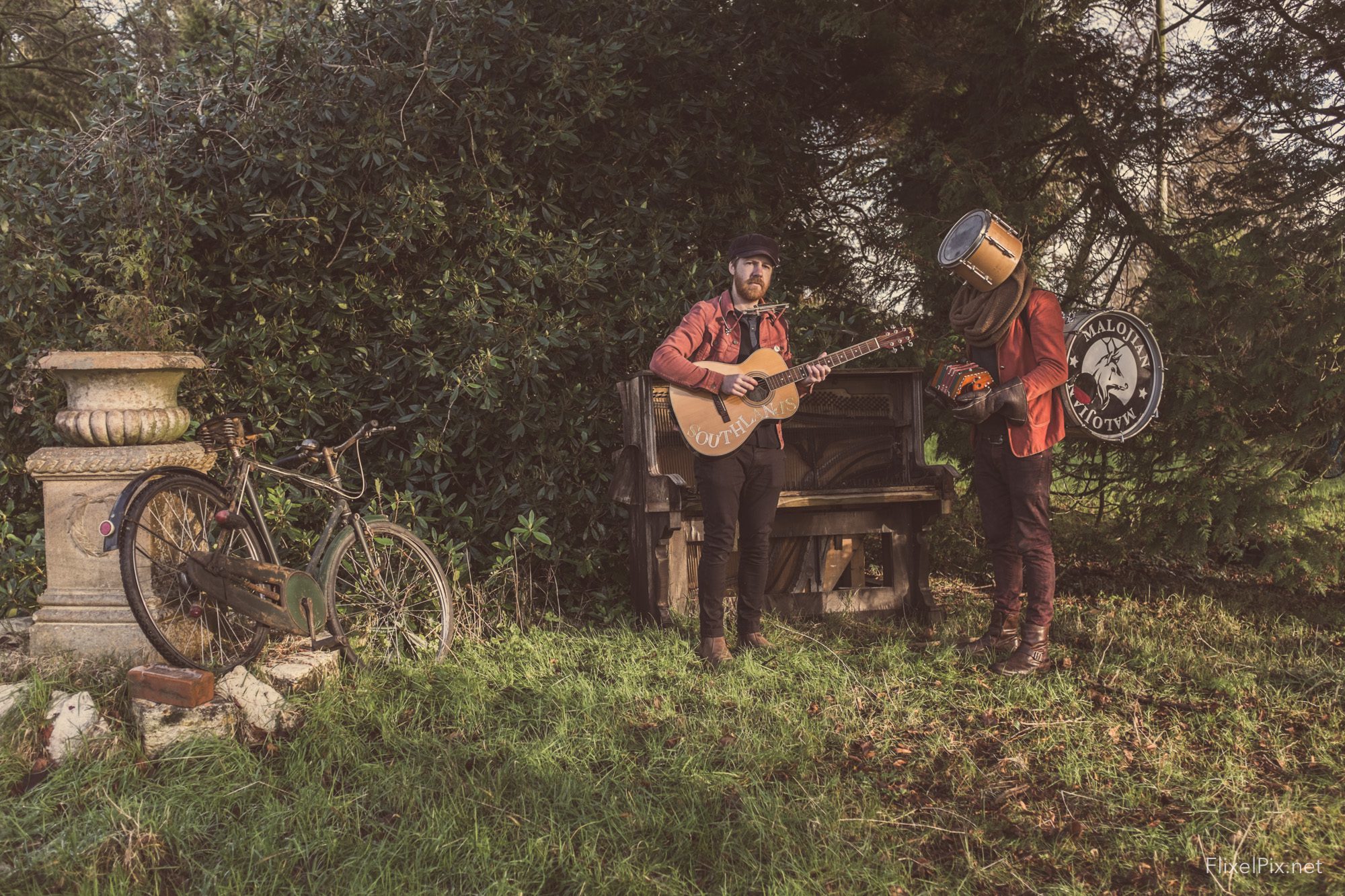I have carried a Fujifilm X100 Series camera with me everywhere since 2011. (Always the silver model in its brown leather case). With each new model, from S to T to VI, the X100 has gained additional processing power and features, all while maintaining its retro, vintage styling. The X100 rarely goes unnoticed in public, often sparking positive comments and curiosity. Its vintage look creates a relaxed atmosphere, making it especially appealing for portrait photography.
While I use my X-Pro for landscape photography, the X100 Series is always in my rucksack as a second body, or as my main camera on quick trips into the hills. Some may consider the 23mm (35mm equivalent) lens limiting, but I find that 35mm is the ideal focal length for general photography, especially when there’s something in the frame to give a sense of scale. The lead image is the first frame I captured with the original Finepix X100.
Table of Contents
LONG EXPOSURE PHOTOGRAPHY
Don’t let the compact simplicity of the X100 deceive you, this is a powerful, fully featured little camera. As well as a built-in ND filter the lens ring unscrews to allow additional featured to be used. This next image was captured at the edge of Derwentwater in the Lake District on a later summer evening. The X100 Series shutter button is threaded to take the traditional cable release making long exposure photography that bit easier. More on Long Exposure Photography.

Fujifilm X100 (2011)
Sensor: 12.3 MP APS-C CMOS.
Introduced the hybrid viewfinder, combining optical and electronic functionality. Excellent image quality and colour reproduction for a compact camera. Retro design and intuitive manual controls inspired by classic film cameras. The retro styling may suggest vintage features to some, but as we know, looks aren’t everything. It’s the versatility of the Fujifilm X100 Series that makes it my go-to everyday camera.
Fujifilm X100S (2013)
Sensor: 16.3 MP APS-C X-Trans CMOS II.
Upgraded to the X-Trans sensor, delivering sharper images and improved dynamic range. Added phase detection autofocus, significantly boosting speed and accuracy. Enhanced processing power for better JPEG rendering and film simulations.
Fujifilm X100T (2014)
Sensor: 16.3 MP APS-C X-Trans CMOS II.
Advanced Hybrid Viewfinder with real-time parallax correction for greater accuracy. Introduced Classic Chrome film simulation, offering a unique cinematic color profile. Added built-in Wi-Fi connectivity for easy image transfer and remote shooting.
Fujifilm Colour Rendering
If you are concerned about the image quality for professional work, fear not. Employing the same sensor as the flagship Fujifilm range the X100 series delivers stunning image quality with impeccable colour rendering.

Some of the first images I captured with the Fujifilm X100 in 2011 are in my Getty Image catalog. This image, taken with the X100T for the Malojian ‘Southlands’ album cover, looks stunning on the gatefold vinyl LP.
Fujifilm X100F (2017)
Sensor: 24.3 MP APS-C X-Trans CMOS III.
24.3 MP resolution provided a significant leap in detail and clarity. Improved battery life and compatibility with widely used NP-W126S batteries. Included a focus joystick for faster and more precise AF point selection.
Fujifilm X100V (2020)
Sensor: 26.1 MP APS-C X-Trans CMOS 4.
Redesigned lens for sharper image quality, especially wide open at f/2. Added a two-way tilting touchscreen, increasing flexibility for various angles. Introduced weather resistance (with optional adapter), making it more durable for outdoor use.
Fujifilm X100VI (2024)
Sensor: It features a 40.2-megapixel APS-C X-Trans CMOS 5 HR sensor; The X100VI brought a number of big upgrades.
In-Body Image Stabilization (IBIS): The X100VI is the first model in the X100 series to feature a five-axis IBIS system, delivering up to 6.0 stops of stabilization. This innovation ensures sharper images in low-light environments and provides greater flexibility for handheld shooting.
Advanced Autofocus with AI-Based Subject Detection: The X100VI boasts an enhanced autofocus system powered by AI-based subject detection. It can accurately recognize and track various subjects, including animals, birds, and vehicles, ensuring precise focus even in demanding shooting conditions.
Enhanced Video Capabilities: The X100VI supports 6.2K video recording at up to 30p, capturing high-resolution footage with exceptional detail. It also offers 4K recording at up to 60p and Full HD recording at up to 240p, making it a versatile choice for diverse videography needs.
PANORAMA MODE
If you need wider coverage of a scene, you’ll be happy to know that all Fujifilm X100 Series cameras feature a built-in sweep panorama mode. Simply sweep the camera slowly in an arc, and it will capture and stitch together a series of images into a final JPEG panorama. I love these images, and I even have one of Hare’s Gap in the Mourne Mountains printed and mounted on the wall at home.
DOCUMENTARY PHOTOGRAPHY
I love using the X100 series for documenting behind the scenes work whether at music events or on film sets. The X100 is a natural performer that doesn’t intimidate a subject in the same way a large DSLR might.
As an additional challenge I now only allow myself a single frame to capture a subject, the portrait below of actor Jim Broadbent (who is as much of a gentleman as one can imagine) was a single capture with the X100S.
FUJIFILM TCL-X100
I also invested in the TCL-X100 lens adaptor to create a 50mm focal length (as used below). This image was captured with the “CLASSIC CHROME” film simulation, the X range cameras come with a host of film stock stimulations built in that are well worth exploring.
I really enjoy using this little TCL adaptor! The good news is that Fujifilm has included a digital teleconverter feature in the X100F, allowing you to shoot JPGs at 35mm, 50mm, and 70mm. For those who own an X100 camera, the converters are an excellent addition. Furthermore, version two of the lenses is automatically recognised by the X100F, so there’s no need to manually select them in the menu system
The X100 Series is special. It’s portable and perfect for traveling light. Both the X100T and X100F offer USB charging, so you don’t even need to pack a charger. It’s powerful, the X100F has the same sensor as the flagship X-Pro2 and X-T2 cameras. It is versatile enough to capture stunning images in almost any situation. If I could only own one camera, without hesitation, it would be my X100 Series. It’s special to me and represents the very essence of the FUJIFILM X experience
Conclusion
The Fujifilm X100 series is renowned for its compact, retro-inspired design paired with advanced digital features. It features a fixed 23mm f/2 lens, ideal for street and portrait photography, and an APS-C sensor that delivers sharp, vibrant images.
The X100’s hybrid viewfinder allows photographers to switch between an optical and electronic view for more control and flexibility. Known for its colour science, Fujifilm provides classic film simulations, allowing users to emulate vintage film looks.
The portability of the Fujifilm X100 Series with its high-quality image output and intuitive controls, make it a popular choice for both enthusiasts and professional photographers.
This post started with 50, then 100 images. It is now well over 100… There may be even more when then Fujifilm X100VII is released.
Links
Understanding Depth of Field
The Long Exposure eBook
Celebrating the Fujifilm X100F
How to Capture Long Exposure Photography with the Fujifilm X100VI
Check out the FlixelPix Biog for more Fujifilm X100 related content.
Discover more from FLIXELPIX
Subscribe to get the latest posts sent to your email.











































































































